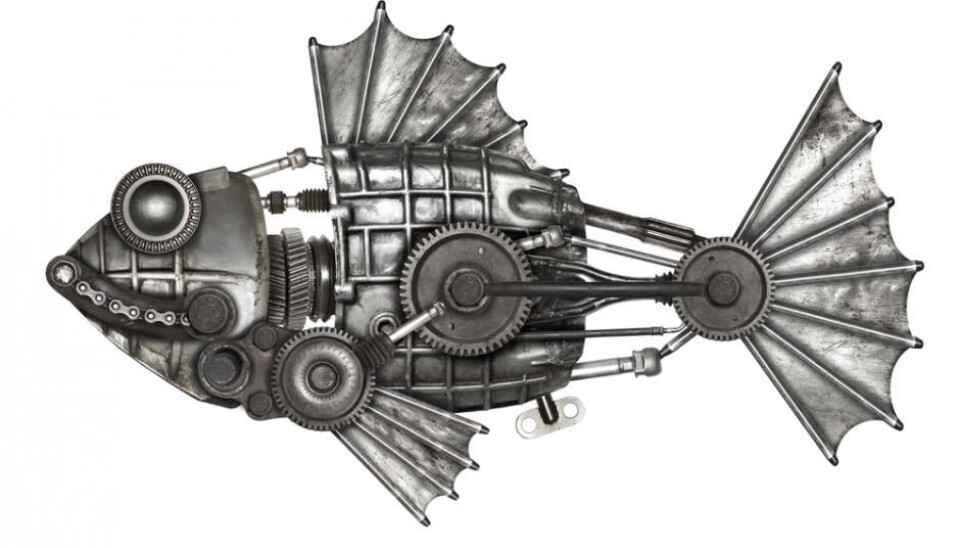
Are organisms basically living machines?
Is your body just a very complicated mechanical system? New project examines the biological differences between living organisms and machines.
Scientists are increasingly interested in the prospect of solving a range of fundamental problems facing our civilisation by designing and reconstructing organisms.
We seek and expect to meet challenges in domains such as medicine, food, and energy by investing in research and development of biotechnology.
For example, researchers at the Center for Synthetic Biology at the University of Copenhagen are constructing photosynthetic organisms for use in cancer treatment.
Scientists and science communicators often rely on machine metaphors to communicate scientific results: Genomes are said to be blueprints, brains are computers, and cells are little factories consisting of molecular machines.
A project at University of Copenhagen, for which I am principle investigator, is examining the philosophical aspects of the use of machine metaphors in biological research, research communication, and their influence on bioethical debates.
We are currently editing a book, which investigates the problems arising from appealing to machine metaphors in the life sciences, science communication, and bioethics. One of the disciplines that we consider is synthetic biology.
Synthetic biology: The systematisation of life
Synthetic biology is a good example of a research area that focuses on constructing living systems, which can contribute to the production of valuable medicine or green energy.
One of the central ideas driving synthetic biology is to make it possible to construct living beings, such as microorganisms or plants, using engineering methods.
In particular, synthetic biologists are aiming to transfer the rational design principles known from the production of mechanical and electronic machines to biology.
A mechanical watch, a car, or a computer consists of many different standard components, which can be combined into more complex devices and subsystems, performing a particular function. These subsystems can in turn be combined to make a machine, for example, a machine that measures time.
Synthetic biologists are working to develop biological standard parts with specific functions that can be used to construct organisms. This would help to produce medicine in a reliable way at a commercially viable scale.
It is tempting to see the application of engineering methods to design and construct biological systems, as a modern version of the mechanical biology of the French philosopher René Descartes in his thesis of organisms as machines.
In Descartes’ time – the first half of the 17th century – it had become common to display complex machines around Europe. Descartes’ put forward the claim that living bodies (animals and the body of humans) are not only comparable to, but in fact are (albeit extremely complex) machines created by “divine design.”
Thus, for Descartes there was essentially no fundamental difference between a naturally evolved duck and a man-made mechanical duck, merely a difference in the degree of their mechanical complexity.
Critics of synthetic biology’s vision of rational design and construction of “living machines” put forward the claim that it is based on Descartes’ mechanical biology, which they think is mistaken.
It might be useful to draw analogies between organisms and machines as part of biological research. But organisms and man-made machines are fundamentally different.
Why organisms aren’t machines
One of the most basic objections to the identification of organisms and machines is that their behaviour cannot be reduced to the activities and relations of their parts.
In contrast to a mechanical watch, whose activity is fully determined “from the bottom up” by the activities and organisation of its parts, organisms influence the activities of their parts.
For example, your muscles start to grow if you start to exercise. Moreover, the parts of a watch exist before the watch does. It is not the watch itself that builds its own parts.
In contrast, organisms are self-producing in the sense that it is the organism itself that builds and maintains its parts. If synthetic biology assumes Descartes’ mechanical biology, then it might be headed to a dead end.
So, is synthetic biology driven by an assumption of Cartesian mechanical biology? Does the vision of the rational design and construction of organisms rely on a literal and not merely metaphorical understanding of the idea that organisms are machines?
The Synthetic Biologists’ Reply
Take a closer look at the attempt by synthetic biologists to apply engineering methods to living systems, and it transpires that they are painfully aware of the fundamental differences between organisms and machines.
One of the main motivations behind developing tools and techniques for building living organisms is that it is extremely difficult to fully understand how even the simplest forms of life operate.
Life as we know it is the result of evolution by natural selection. As such, natural organisms are more like the products of a tinkerer than the results of a master engineer’s rational design.
Thus, if we are to solve pressing problems such as the production of valuable medicine or biofuels using biotechnology it is tempting to focus on developing predictable and reliable synthetic organisms as an alternative to devoting a lot of person power to work on naturally evolved organisms.
That is, I suggest, what drives synthetic biologists to apply rational design methods to biological matter – not that they think that living organisms and mechanical clocks are deep down the same thing.
Are synthetic biology solutions feasible?
Is it even possible to build new forms of life?
Descartes was sceptical, and thought it would require divine skills to construct something as complex as a living machine.
Among synthetic biologists, there is also widespread recognition that the production of complex synthetic organisms “from scratch” is not around the corner.
When scientists produce substances for use in cancer treatments they do not build a new plant. Rather they try to combine the building blocks of extant plants with synthetic parts and devices.
The result is not a wholly rationally designed organism, but an organism that contains manmade parts and modules, which enables it to perform a specific desired function in a reliable way.
Thus, in a sense, you could say that organisms produced using synthetic biology will be more machine-like than naturally evolved organisms.
---------------
Read this article in Danish at ForskerZonen, part of Videnskab.dk
Translated by: Sune Holm
Scientific links
- Sune Holm: 'Is synthetic biology mechanical biology?', History and Philosophy of the Life Sciences, 2015, DOI: 10.1007/s40656-015-0081-y
- Daniel J.Nicholson: 'Organisms ≠ Machines', Studies in History and Philosophy of Science, 2013, DOI: 10.1016/j.shpsc.2013.05.014
- Maarten Boudrya & Massimo Pigliucci: 'The mismeasure of machine: Synthetic biology and the trouble with engineering metaphors', Studies in History and Philosophy of Science, 2013, DOI: 10.1016/j.shpsc.2013.05.013













